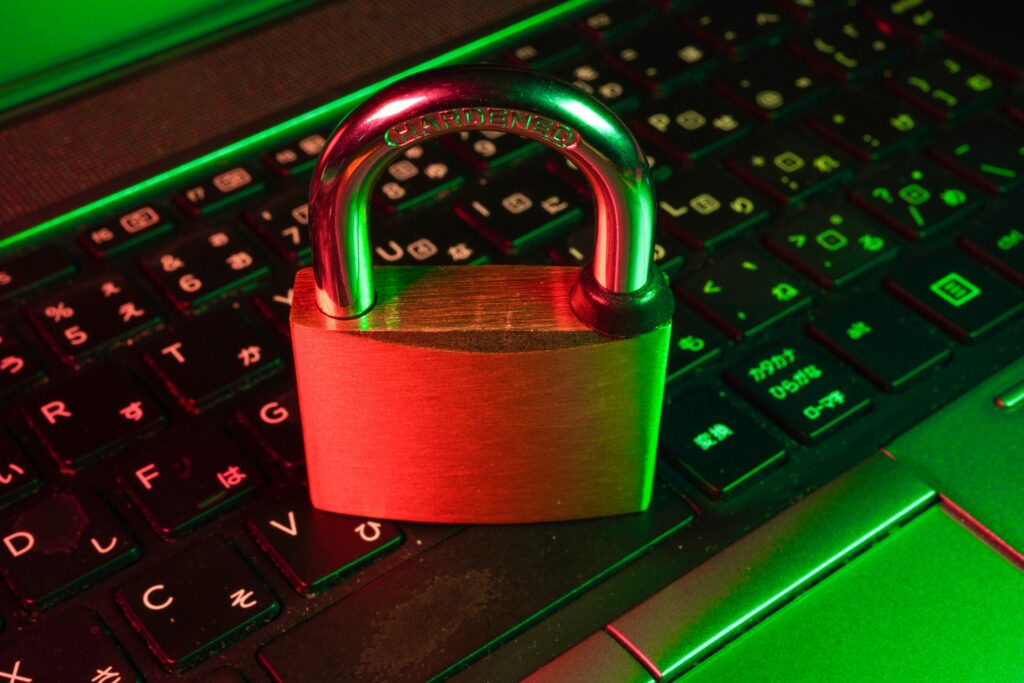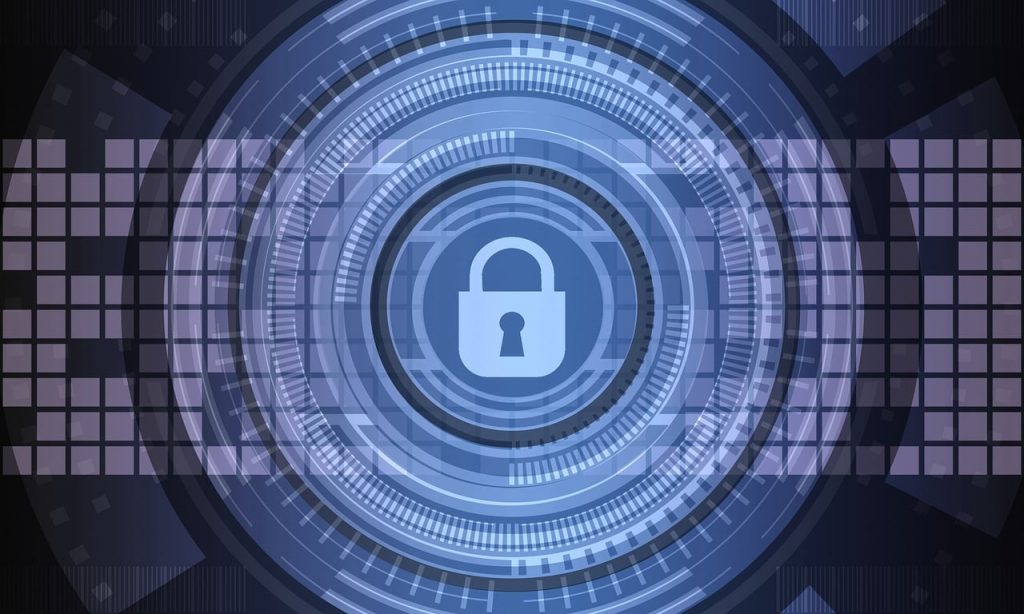Published On: 19th June, 2024

Authored By: Anshula Shreshth
THE ICFAI UNIVERSITY, HYDERABAD
Introduction
In the vast breadth of digital geography, our lives have seamlessly integrated with the virtual realm, where every click, scroll, and commerce paints a portrayal of our digital actuality. As we navigate this connected world, our data becomes a thread woven into the intricate fabric of the internet, forming a digital shade that encapsulates our preferences, habits, and indeed our bourns. This is the period where data and individualities cross, a juncture that necessitates a nuanced understanding of the sequestration counteraccusations essential in our digital relations. Imagine a typical day in your life – browsing your favorite online stores, engaging with musketeers on social media, and maybe indeed exercising fitness or productivity apps to enhance colorful aspects of your routine. In each of these trials, a subtle exchange takes place – your data for services and conveniences. This exchange, still, isn’t a bare sale; it’s the foundation of the digital age, a paradigm where particular data serves as the currency easing our online gests.
In the grand scheme of the internet’s elaboration, from the early days of static web runners to the dynamic, connected ecosystem we inhabit moment, sequestration has morphed into a critical focal point. This manual seeks to unravel the multifaceted relationship between data and individualities, offering perceptivity into the complications of data collection, the delicate balance between personalization and sequestration, and the challenges and openings in the realm of digital sequestration. Our digital trip begins with the elaboration that has brought us to this point. From the commencement of the internet as a tool for information exchange to its current incarnation as an integral aspect of our diurnal lives, we have witnessed a profound metamorphosis. moment, digital geography serves as glass reflecting our interests, solicitations, and relations, creating a reflection that’s both fascinating and, at times, disturbing. In the realm of digital sequestration, the commission is crucial. therefore, this manual extends its focus to the druggies, guiding them on managing their sequestration settings and championing educational enterprises that enhance digital knowledge. The narrative also scrutinizes the part of pots, prompting translucency and responsibility as essential factors of responsible data practices. As we cut through the complications of data and sequestration, the manual concludes with a contemplation of the future. It peers into arising technologies, anticipates adaptive nonsupervisory fabrics, and prompts compendiums to consider their part in shaping the path forward. In substance,” Data and You A sequestration Manual” serves as a comprehensive companion, a digital compass, navigating the complications of the data-driven world and empowering individualities to make informed opinions in securing their digital characters.
UNDERSTANDING DIGITAL PRIVACY
- The Evolution of Digital Privacy
Over time, the elaboration of digital sequestration has experienced a profound metamorphosis due to technological advancements. originally, during the early days of internet operation when sequestration enterprises were fairly minor compared to now, individualities participated in information online in an open manner. still, with increased social media exertion, e-commerce, and ubiquitous connectivity over colorful channels; particular data digitization led to fussing security pitfalls because druggies’ nonpublic details came vulnerable.
- Common threats
The digital world harbors commonplace troubles that can pose serious pitfalls to both individualities and associations. Cybersecurity pitfalls pullulate, ranging from vicious acts similar to phishing, hacking, and malware attacks. These imminences target vulnerabilities in technology systems with the eventuality of exposing sensitive data leading to dangerous consequences like unauthorized access or breaches of nonpublic records. Social engineering is another position of threat wherein particular information may be compromised through cerebral manipulation by malignant sources performing in reputational detriment or loss besides fiscal rigors including identity thefts. therefore, it has become decreasingly important for everyone to comprehend these hazards, minimize their goods, and strengthen the security measures needed to cover precious online means as our dependence on technology platforms continues to grow fleetly across all walks of life and business sectors likewise.
Navigating Social Media
- Privacy Settings and Controls
Navigating the social media terrain effectively starts with learning the insulation settings and controls offered by major platforms. Taking a simple way to adjust these settings is vital for enhancing digital security. This includes managing visibility preferences, confining cult access, and exercising features like two-factor authentication. Regular reviews and updates of these settings are equally essential. Social media platforms constantly introduce new features or modify being bones, and staying informed ensures that stoners maintain control over the information they partake in online.
- Third-Party Apps
In the expansive world of social media, third-party apps can present significant insulation challenges. checking app clearances becomes essential to understanding the extent of access these operations have to particular information. multitudinous third-party apps request clearances that may surpass what is necessary for their functionality, raising valid insulation enterprises. stoners should be conservative about the implicit risks associated with these operations, including data breaches and the abuse of particular information. Regularly reviewing and repealing gratuitous app clearances can substantially reduce the exposure to analogous risks and enhance overall insulation.
Securing Online Communication
- Encrypted Messaging
In the realm of digital communication, the significance of end-to-end encryption can’t be inflated. End-to-end encryption is a security measure that makes sure that only the sender and the receiver of the content of a communication. This means that indeed service providers easing the communication can’t decipher the information. Embracing this position of encryption is vital for securing the insulation of dispatches changed online. As we navigate a period where cyber risks are current, individualities must prioritize platforms that prioritize end-to-end encryption to ensure the confidentiality and integrity of their dispatches. Several secure messaging apps are designed with this encryption in mind, furnishing stoners with a safer and more private means of switching information.
- Email Security
Securing dispatch communication involves administering robust measures to cover various cyber risks. First and foremost, individualities should concentrate on creating and maintaining strong watchwords for their dispatch accounts. A strong word generally includes a combination of uppercase and lowercase letters, numbers, and special characters. also, enabling two-factor authentication adds a spare caste of security, taking an alternate form of verification beyond the word. This significantly reduces the trouble of unauthorized access to dispatch accounts. Phishing attempts represent a current trouble to dispatch security. individualities must be vigilant in relating and avoiding phishing emails, which constantly disguise themselves as legit dispatches to trick benefactors into discovering sensitive information. recognizing red flags analogous to suspicious sender addresses, unexpected attachments, or critical requests for particular information is vital. By staying informed and espousing these dispatch security practices, individualities can fortify their digital defenses and minimize the risks associated with cyber risks in the dispatch sphere.
Safeguarding Personal Devices
- Device Security Measures
In the ever-evolving terrain of digital security, prioritizing device security measures is fundamental. Regular software updates and patches play a vital part in securing bias against arising risks. By staying current with software updates, individualities ensure that their bias is equipped with the bottommost security advancements, creating a robust defense against implicit cyber risks. also, the installation of antivirus andante-malware programs provides an added caste of protection. These programs are designed to describe and neutralize vicious software, fortifying the overall security posture of particular bias.
- Secure Wi-Fi Practices
Creating a secure Wi-Fi terrain is consummate in the digital age, where connectivity is pervasive. One fundamental aspect is the creation of strong Wi-Fi watchwords. A strong word, conforming to a mix of letters, numbers, and special characters, acts as a vital barricade against unauthorized access to the network. Beyond this, the use of Virtual Private Networks (VPNs) serves as an advanced security measure. VPNs reckon internet business, furnishing a fresh caste of confidentiality and integrity to data transmitted over the Wi-Fi network. By combining strong Wi-Fi watchwords with the deployment of VPNs, individualities significantly enhance the security of their online exertion, mollifying the trouble of unauthorized access and implicit cyber risks.
DATA PROTECTION LAWS
A crucial piece of legislation in India that addresses issues with digital autographs, cybercrime, and electronic commerce is the Information Technology (IT) Act, of 2000. Then, we explore more deeply into many crucial IT Act clauses and how they relate to data protection and digital governance.
- Digital Administration
A. Section 3: Digital Signatures
Digital autographs are honored by the IT Act as being just as licit fairly as handwritten autographs. Section 3 facilitates the expansion of electronic deals by giving legal status to electronic records that have been authenticated by digital autographs
B. Authentication and Electronic Records (Sections 4-7)
The IT Act’s Sections 4 through 7 define the legal acceptance of electronic records and outline the procedures for electronic authentication. By doing this, the need for traditional attestation is dropped and the root for a paperless legal system is laid.
- Cybercrime Provisions
A. Unauthorized Access and Data Theft Section 43:
Data theft and illegal access to computer systems are penalized under Section 43. Making individualities who pierce or download information without authorization liable for damages, helps to stop unauthorized data breaches.
B. Unauthorized Disclosure of Data (Section 66)
Section 66 focuses specifically on unauthorized data modification and penalizes malefactors oppressively for any conduct that affect the erasure, falsification, or revision of electronic data.
- Data protection and privacy
A. Compensation for Failure to Cover Data (Section 43A) Section 43A of the IT Act authorizations reasonable security practices for realities handling sensitive particular data. In case of a failure to apply respectable security measures resulting in unlawful loss or gain, the affected party is entitled to compensation.
B. Power to Issue Directions for Interception (Section 69) Under Section 69, the government possesses the authority to issue directions for interception, monitoring, or decryption of any information through any computer resource. This provision, while aimed at icing public security, raises enterprises about individual insulation.
C. Guarding sensitive Personal Data (Section 72A) Section 72A criminalizes the exposure of particular information without the owner’s concurrence, intending to protect sensitive particular data from unauthorized sharing. This provision reinforces the significance of carrying unambiguous concurrence before telling particular information.
CASE STUDIES
The Shreya Singhal v. Union of India case surfaced against the background of Section 66A of the Information Technology (IT) Act, 2000. This provision criminalized the transmission of offensive dispatches through communication services, including social media platforms. The case’s birth lay in cases of abuse, where individualities faced arbitrary apprehensions for expressing dissent or review online. The language of Section 66A was broad and vague, raising enterprises about its implicit infringing upon the fundamental right to freedom of speech and expression elevated in the Indian Constitution.
Issue Raised
The primary legal issue before the Supreme Court was the constitutionality of Section 66A. The leaders, led by law pupil Shreya Singhal, contended that the provision demanded clarity, was overbroad, and could lead to arbitrary interpretation, violating the Indigenous right to freedom of speech. The challenge centered on the need to strike a balance between regulating online speech to help abuse and guarding the popular values essential in the Constitution. The court was assigned to determine whether Section 66A upheld indigenous principles or posed an overdue trouble to free speech in the digital realm.
Judgment
In its major judgment on March 24, 2015, the Supreme Court declared Section 66A unconstitutional. The court, led by Justice J. Chelameswar held that the provision failed to meet the indigenous morals of clarity and perfection. It emphasized the significance of guarding freedom of speech, particularly in the online space, and expressed enterprises about the implicit abuse of Section 66A to stifle legit expression. The verdict was a resounding declaration of the fundamental right to freedom of speech and expression in the digital age. also, the judgment clarified the arrears of peacemakers, asserting that they could not be held liable for user-generated content as long as they incontinently removed illegal material upon advertisement. The Shreya Singhal case set a vital precedent, impacting the legal terrain governing online expression and buttressing the commitment to upholding Indigenous values in the dynamic digital sphere of India.
The Puttaswamy case, formally known as JusticeK.S. Puttaswamy (Retd.) V. Union of India was a corner legal battle that centered on the right to insulation as a fundamental right under the Indian Constitution. The case began from a series of solicitations challenging the indigenous validity of the Aadhaar design, which involved the collection of biometric and demographic information from Indian resides. The suppliants argued that the obligatory linking of Aadhaar to various services violated the right to insulation, a claim that sparked a broader examination of the indigenous status of this right.
Issue Raised
The primary legal issue revolved around whether the right to insulation could be considered a fundamental right defended by the Indian Constitution. The suppliants argued that the collection and use of biometric data under Aadhaar infringed upon their right to insulation, which they contended was a natural part of the right to life and particular liberty guaranteed by Composition 21 of the Constitution. The case thus posed a fundamental question about the compass and recognition of insulation as an indigenous right in the terrain of evolving technologies and state surveillance.
Judgment
In a major judgment on August 24, 2017, a nine-judge bench of the Supreme Court unanimously recognized the right to insulation as a fundamental right under Composition 21 of the Indian Constitution. The court held that insulation is an essential aspect of quality and particular autonomy, emphasizing its integral part in conserving individual freedoms. While upholding the right to insulation, the court also conceded that it could be subject to reasonable restrictions for legit state interests. The judgment not only had implications for the Aadhaar design but established a foundational principle affirming the indigenous protection of insulation in India. It set the stage for posterior legal developments and exchanges around data protection and individual rights in the digital age. The Puttaswamy case underscored the bar’s part in interpreting Indigenous principles in the terrain of evolving societal morals and technological advancements.
CONCLUSION
In a period where our lives are increasingly intertwined with the digital realm, securing our digital insulation has come consummate.” Digital Sequestration A Practical Companion to Securing Your Online Life” serves as a comprehensive resource, offering perceptivity and practicable way to empower individualities in guarding their sensitive information and maintaining control over their online presence. The companion begins by illuminating the evolving terrain of digital insulation, emphasizing the pervasive nature of online risks and the significance of visionary measures. It recognizes the ubiquity of technology in our diurnal lives and emphasizes the need for a practical approach to palliate risks and vulnerabilities. The companion delves into the complications of digital vestiges, pressing how our online exertion leaves indelible marks that can be exploited. By raising awareness about the implicit consequences of oversharing and the value of a minimized digital footprint, the companion encourages albums to reflect on their online conduct. A significant portion of the companion is devoted to navigating the complex terrain of social media. insulation settings and controls on major platforms are deconstructed, furnishing stoners with simple, step-by-step instructions to fortify their online fortresses. Regular reviews and updates are emphasized as vital habits to acclimatize, icing that stoners stay abreast of evolving platform programs and features that may impact their insulation. The companion recognizes the convenience of third-party apps but urges caution, slipping light on the associated risks and the significance of checking app clearances. Encryption, a foundation of digital insulation, takes center stage in the companion’s exploration of secure communication. The significance of end-to-end encryption is illustrated and recommended secure messaging apps are spotlighted. This section serves as a practical toolkit for individualities seeking to fortify their dispatches against implicit spying or unauthorized access. The companion seamlessly transitions into the realm of dispatch security, furnishing practicable perceptivity on administering robust watchwords, espousing two-factor authentication, and relating and avoiding phishing attempts. The companion doesn’t simply stop at communication platforms; it extends its reach to the veritably bias we use daily. Robust device security measures are explored, emphasizing the significance of regular software updates, antivirus programs, andante-malware tools. The companion advocates for the creation of strong Wi-Fi watchwords and introduces the part of Virtual Private Networks (VPNs) in enhancing security. It offers a comprehensive approach to fortifying the technological gateways that connect us to the digital world. An in-depth examination of data protection laws forms a critical member of the companion. It provides an overview of major data protection regulations, offering albums’ perceptivity into their rights and the arrears of associations handling particular data. By probing into specific cases and samples, the companion brings these laws to life, showcasing their real-world implications and buttressing the significance of a robust legal frame for digital insulation. The conclusion of the companion serves as a call to action, egging albums to integrate the learned principles into their digital lives. It emphasizes the dynamic nature of digital terrain, encouraging a mindset of continuous knowledge and adaptation. By fostering a sense of agency and commission, the companion equips individualities with the tools demanded to navigate the complications of the digital age confidently. In substance,” Digital Sequestration a Practical Companion to Securing Your Online Life” is not just a manual but a holistic roadmap to a more secure and apprehensive digital actuality. It serves as a beacon, illuminating the path toward digital commission and insulation rigidity. As albums close the companion, they are fortified with practical knowledge, heightened awareness of implicit risks, and the confidence to navigate the digital world while securing their insulation in an ever-evolving terrain.




